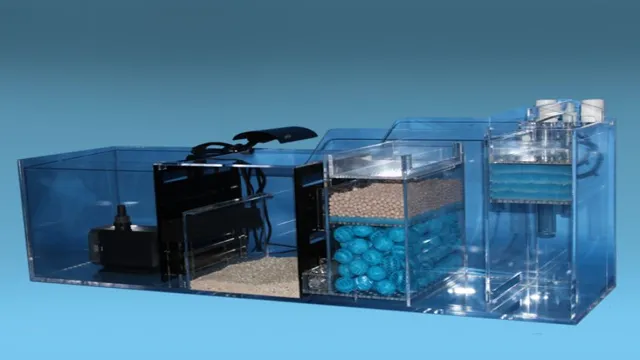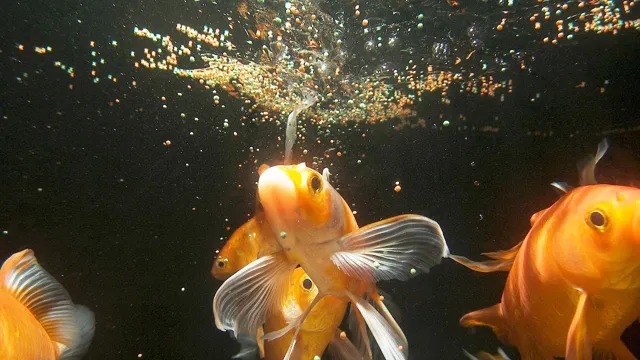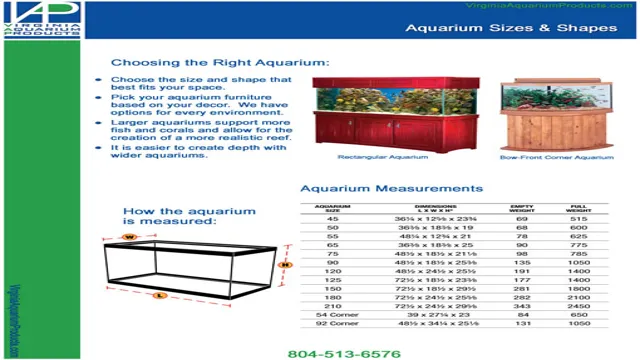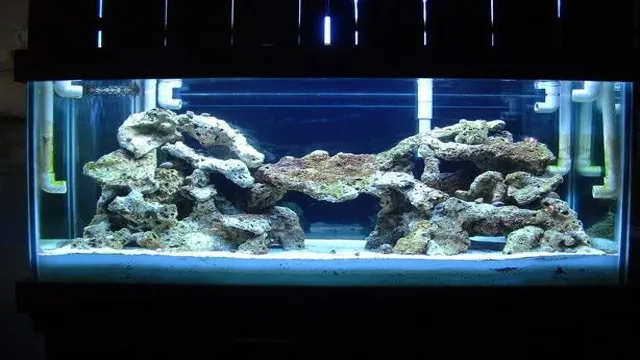If you keep a freshwater aquarium, you may have encountered cyanobacteria– a type of bacteria that can take over and cause unsightly green or blue-green algae blooms. Combatting this issue can be difficult, but with the right techniques and products, it is possible to keep your aquarium clear and healthy. In this blog, we’ll explore the causes and effects of cyanobacteria in freshwater aquariums, as well as some effective strategies for preventing and treating it.
So, grab your snorkel and let’s dive in!
Understanding Cyanobacteria
Cyanobacteria in freshwater aquariums can be a nuisance for fish keepers. This blue-green algae forms a slimy layer that covers the substrate and even the decorations. To combat cyanobacteria, it is essential to understand its causes.
One common reason is the accumulation of nutrients like phosphates and nitrates in the water, which fuels the growth of the algae. Another cause could be overfeeding the fish or inadequate water changes. So, the first step is to test the water parameters and take corrective actions.
Reducing the nutrient levels, improving filtration, and increasing oxygenation can all help in preventing the return of cyanobacteria. Manual removal of the algae and vacuuming the substrate can also be helpful. It is essential to be consistent in maintaining the aquarium, keeping the water clean, and monitoring the nutrient levels.
By following these steps, you can effectively combat cyanobacteria and maintain a healthy freshwater aquarium for your fish.
What is cyanobacteria?
Cyanobacteria are a type of photosynthetic bacteria that can be found in both freshwater and marine environments. They are also referred to as blue-green algae due to their blue-green pigmentation, but they are not truly algae. These bacteria are capable of producing their own food by capturing energy from sunlight through photosynthesis.
Cyanobacteria are essential in the food chain of aquatic ecosystems as they provide food for a variety of organisms. However, excessive growth of cyanobacteria can lead to harmful algal blooms, which can produce toxins that are harmful to humans and animals. It’s important to understand cyanobacteria and their role in the ecosystem to ensure their growth is in balance and not causing harm to the environment.
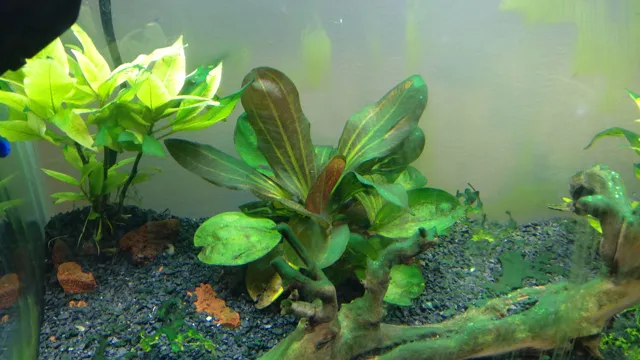
What causes it to thrive in aquariums?
Cyanobacteria, commonly known as blue-green algae, is an organism that can thrive in aquariums under the right conditions. This primitive organism can quickly multiply and cover the surfaces of the tank in a slimy, greenish-blue film. One of the reasons why cyanobacteria thrives in aquariums is its ability to photosynthesize and produce its energy from light.
Therefore, if the aquarium receives too much light or nutrients, cyanobacteria can grow uncontrollably. Additionally, low water flow or poor water quality can create stagnant water, making it easier for cyanobacteria to grow. To prevent cyanobacteria growth, it is essential to maintain water quality, perform regular water changes, and maintain proper lighting and nutrient levels.
By understanding the factors that contribute to cyanobacteria growth, aquarium owners can take the necessary precautions to keep their tank clean and healthy.
Symptoms of Cyanobacteria Overgrowth
One of the most common problems in freshwater aquariums is the overgrowth of cyanobacteria. This can be a frustrating and worrisome issue for aquarium owners, as it can result in unsightly green or blue-green patches on rocks, plants, and substrate, and can also negatively impact water quality. Symptoms of cyanobacteria overgrowth include a slimy or slippery texture on affected surfaces, a foul odor, and a general decline in water clarity.
To combat this issue, there are several steps that can be taken. These include performing regular water changes to improve water quality, reducing excess nutrient levels through the use of a high-quality filtration system, and manually removing any visible cyanobacteria with a siphon or scraper. Additionally, limiting the amount of light and increasing surface agitation can help prevent future overgrowth.
By taking these simple measures, aquarium owners can effectively combat cyanobacteria and maintain a healthy and vibrant freshwater environment for their aquatic pets.
Algae formation
If you’re a pool owner, then you may have experienced algae formation at some point. Cyanobacteria overgrowth is one of the most common indications of an algae problem. It’s typically known by its greenish or blue-green color.
While small amounts of cyanobacteria are harmless, large overgrowth can be a foreboding sign. Symptoms include harmful odor, mucous-like patches on the pool walls and floor, contaminated and cloudy water, and clogged filters. Overgrowth can also make pool surfaces slippery, causing slips, trips and even falls.
To prevent cyanobacteria growth, make sure you keep your chemical levels checked regularly, clean the pool regularly with specialized chemicals, and remove any debris from the pool. You should also maintain good water quality by changing out water at least once every two years or as often as necessary.
Bad odor
Cyanobacteria overgrowth in water can lead to some serious consequences, including bad odor. If you’ve noticed a foul smell coming from your water source, it could be an indication of cyanobacteria growth. This type of bacteria can produce a variety of toxins that not only create unpleasant odors but are also harmful to human and animal health. (See Also: How to Make an Aquarium Filter Baffle: A Step-by-Step Guide for Crystal Clear Water)
Other symptoms of cyanobacteria overgrowth include discolored water, an oily appearance, and the presence of foam or scum on the surface. If left untreated, this bacteria can rapidly multiply, leading to potential health risks and damage to the ecosystem. To prevent or treat cyanobacteria overgrowth, it’s important to monitor water quality, limit nutrient runoff, and consider the use of treatments such as algaecides or bioaugmentation.
Take control of your water quality and stay alert for the signs of cyanobacteria overgrowth to ensure a safe and healthy drinking source.
Reduced oxygen levels and plant growth
Reduced oxygen levels can have a significant impact on plant growth. When oxygen levels are low, plants struggle to produce enough energy for their metabolic processes. As a result, the growth of leaves, roots, and stems can slow down.
It’s important to note that not all plants have the same tolerance for reduced oxygen levels. Some plants are capable of adapting to such conditions, while others are more sensitive and can experience stunted growth or even die. Cyanobacteria overgrowth can be one of the major causes of oxygen depletion.
Symptoms include a blue-green surface scum, excessive growth of algae, and foul odors. Monitoring water quality and implementing measures to prevent cyanobacteria overgrowth can be crucial in ensuring healthy plant growth.
Prevention Measures
Cyanobacteria, also known as blue-green algae, can be a troublesome problem in freshwater aquariums. However, there are a few prevention measures that can be taken to combat this issue. One of the most important steps is to monitor the water parameters frequently, specifically the levels of nitrates and phosphates.
Cyanobacteria thrive in high levels of these nutrients, so it’s crucial to keep them in check. Additionally, regular water changes and a proper maintenance routine can prevent the accumulation of organic material that cyanobacteria feed on. When it comes to feeding your fish, make sure to avoid overfeeding, which can lead to excessive waste.
Finally, ensure proper lighting for your aquarium, as too much or too little light can also promote cyanobacteria growth. By following these preventative measures, you can keep your freshwater aquarium healthy and free of cyanobacteria.
Reducing nutrient levels with frequent water changes
Reducing nutrient levels with frequent water changes is one of the most effective ways to prevent aquarium problems. Frequent water changes can reduce the levels of nitrates, ammonia, and other pollutants that can accumulate in the water. This will help prevent algae growth, keep fish healthy, and promote the growth of healthy bacteria.
By removing old water and replacing it with fresh water, you are essentially resetting the chemical balance of the aquarium water. This will help ensure that the water quality remains high and the fish, plants, and other organisms in the tank remain healthy. In addition, frequent water changes can also help prevent pH fluctuations, which can be harmful to aquatic life.
By regularly replacing the water, you are helping to maintain a stable and healthy environment for your aquarium inhabitants. So, if you want to keep your aquarium healthy and thriving, be sure to make frequent water changes a part of your maintenance routine.
Using a protein skimmer or algae scrubber
When it comes to maintaining a healthy aquarium, prevention is key. One effective measure to prevent the buildup of organic waste in your tank is to use a protein skimmer or algae scrubber. These devices work by removing excess food, waste, and other organic matter before they have a chance to decompose and pollute your water.
A protein skimmer uses bubbles to create a froth that captures organic compounds, while an algae scrubber uses special lights and surfaces to encourage the growth of algae, which then consume organic waste. By regularly using either of these tools, you can significantly reduce the amount of maintenance needed for your aquarium, as well as promote the overall health and wellbeing of your aquatic inhabitants. So if you’re looking for a straightforward and effective way to prevent issues in your aquarium, consider investing in a protein skimmer or algae scrubber today.
Treatment Methods
Dealing with cyanobacteria, commonly known as blue-green algae, can be challenging but not impossible. The key to combatting cyanobacteria in your freshwater aquarium is prevention. Maintaining your aquarium clean is of utmost importance.
Frequently cleaning and handling fish waste and uneaten food can help reduce the availability of nutrients that the cyanobacteria feed off, thus reducing its growth. Another critical aspect is ensuring that light exposure is limited as cyanobacteria thrive on light. It would be best to regulate the amount of time your aquarium is exposed to light.
Finally, some antibiotics can alleviate this problem. However, the use of antibiotics can be harmful and should be considered a last resort. Consulting with an experienced aquarist on the best course of action to combat cyanobacteria is advised.
Manual removal
Manual removal is a treatment method that involves physically removing unwanted items or substances from an infected area. This method is often used in cases of pest infestations, such as cockroaches or bed bugs. It requires the use of specialized tools and equipment, as well as a trained professional to ensure that the infestation is completely eliminated. (See Also: How to Lower Aquarium pH with Vinegar – A Step-by-Step Guide)
Manual removal is also effective in removing skin tags, warts, and moles, but should always be done by a qualified medical professional. Although this method is effective, it can be time-consuming and labor-intensive, and may not be suitable for larger infestations or growths. However, with the use of proper techniques and equipment, manual removal can provide a safe and effective solution to many different types of infestations and skin growths.
Using chemicals
When it comes to fighting pests or plants that invade and spoil your property, using chemicals is one of the most effective treatment methods available. However, the use of chemicals requires careful handling to avoid unwanted consequences, such as harming other wildlife or having residue left on the treated areas. Before using any chemical, it is essential to read and understand the label instructions.
Ensure you wear the necessary protective gear and follow the mixing instructions and measurements carefully. It’s also essential to keep children and pets away from the treated areas until it’s safe to return. While chemicals can work wonders in eradicating pests and plants, it’s best to hire professionals for treatments that require hazardous chemicals.
This ensures maximum safety and effectiveness while minimizing any risks involved. Overall, using chemicals as a treatment method is efficient, but it’s crucial to handle them responsibly and ensure maximum safety.
Introducing competing bacteria and organisms
When it comes to treating bacterial infections, introducing competing bacteria and organisms can be an effective method. This technique is known as microbial interference or competitive exclusion, and it works by introducing beneficial microorganisms to the site of infection. These good bacteria compete with the harmful bacteria for resources and space, ultimately reducing the number of harmful bacteria and allowing the body’s immune system to fight off the infection more effectively.
One common example of this method is the use of probiotics, which are live microorganisms that can be ingested or applied topically to promote healthy gut and skin microbiomes. Additionally, some researchers are exploring the use of phages, which are viruses that specifically target harmful bacteria, as a potential treatment. While more research is needed to fully understand the effectiveness of these methods, introducing competing bacteria and organisms provides a promising avenue for treating bacterial infections with minimal side effects.
Maintaining a Healthy Aquarium
Cyanobacteria are an unwelcome sight in a freshwater aquarium, but they can be combated with the right approach. One effective method is to reduce the amount of light entering the tank, as cyanobacteria thrive in bright conditions. Additionally, increasing water circulation and adding live plants can help compete with the cyanobacteria for nutrients.
It’s also important to make sure the aquarium’s water parameters are optimal, including maintaining proper pH levels and ensuring adequate filtration. Manual removal of the cyanobacteria can also be done with a siphon or scraper, but it’s important to keep up with proper maintenance to prevent their return. Finally, adding beneficial bacteria products and regularly conducting water changes can help maintain a healthy balance in the aquarium and prevent future outbreaks.
With the right care and attention, cyanobacteria can be kept at bay in a freshwater aquarium.
Regular cleaning and maintenance
Regular cleaning and maintenance are crucial for maintaining a healthy aquarium. Dirty water can lead to a buildup of harmful bacteria and algae, which can harm your fish and other aquatic life. It’s important to clean your aquarium regularly to prevent this from happening.
You should remove any uneaten food, dead plants, and debris from the tank as well as perform partial water changes every week or two. Additionally, you should check the water’s parameters using a water testing kit to ensure that the pH, temperature, and ammonia levels are within the appropriate range for your species. A well-maintained aquarium not only looks better, but it provides a healthier environment for your aquatic inhabitants to thrive.
So if you want to ensure that your fish and aquatic plants are happy and healthy, make sure to clean and maintain your aquarium on a regular basis.
Monitoring water parameters
Maintaining a healthy aquarium is essential for the longevity of your aquatic pets. One crucial part of caring for your aquarium is monitoring the water parameters. The water parameters such as pH, ammonia, nitrite, and nitrate levels are vital for the overall health and wellbeing of your fish and other marine life.
Testing these parameters regularly will ensure a stable environment for your fish. The ideal pH level for freshwater aquariums is between 5 and
It’s crucial to maintain a stable pH level because fluctuations can be stressful for the fish and make them vulnerable to disease. Ammonia and nitrite are toxic compounds produced by fish waste and decomposing food.
Nitrate is a byproduct of the nitrogen cycle. High levels of these compounds can be detrimental to the health of your fish. Therefore, testing the water frequently will help you to identify any problems and make the necessary adjustments. (See Also: How Often You Need to Change a Canister Aquarium Filter: A Comprehensive Guide)
Maintaining healthy water conditions is fundamental in keeping your aquatic ecosystem thriving for years to come.
Introducing a variety of plants and organisms
Maintaining a healthy aquarium is crucial for the well-being of the plants and organisms within it. An effective way to promote a thriving ecosystem is by introducing a variety of plants and organisms. Not only does this create a more visually appealing aquarium, but it also helps to balance the water chemistry and prevent the buildup of harmful bacteria and algae.
Adding freshwater aquatic plants, such as Java fern or Amazon sword, not only provides natural filtration but also serves as a hiding place for fish and other aquatic creatures. Additionally, introducing different species of snails, shrimp, or algae-eating fish can help keep the aquarium clean by consuming excess food and waste. These species, known as detritivores, will maintain a healthy balance within the aquarium by cleaning up after other inhabitants.
Including a variety of plants and organisms creates a natural balance in the aquarium and promotes a healthy, thriving ecosystem.
Conclusion
In conclusion, beating cyanobacteria in your freshwater aquarium requires a multi-faceted approach. First and foremost, maintain water quality by doing regular water changes and avoiding overfeeding. Secondly, keep your light levels in check to prevent excess photosynthesis.
Thirdly, consider introducing live plants or algae eaters to compete with the cyanobacteria for nutrients. Lastly, if all else fails, don’t be afraid to break out the big guns and use a chemical treatment. With these strategies in your arsenal, you’ll be sure to keep your aquarium free of unsightly and potentially harmful cyanobacterial blooms.
Just remember, clean tanks make happy fish (and humans too)!
FAQs
What is cyanobacteria and why is it a problem in freshwater aquariums?
Cyanobacteria, commonly known as blue-green algae, is a type of bacteria that can quickly grow and spread in aquariums. It can cause water quality issues, harm fish and plants, and create an unsightly appearance in the tank.
How can I prevent cyanobacteria from growing in my freshwater aquarium?
You can prevent cyanobacteria growth by maintaining good water quality, avoiding overfeeding, providing adequate lighting, and adding live plants or algae-eating fish to the tank. It’s also important to regularly clean and maintain the aquarium equipment.
Can I use chemicals to get rid of cyanobacteria in my freshwater aquarium?
Yes, there are several chemical treatments available to combat cyanobacteria in aquariums, such as erythromycin and hydrogen peroxide. However, it’s important to carefully follow the instructions and dosage recommendations, as these treatments can also harm beneficial bacteria and other organisms in the tank.
What are some natural ways to control cyanobacteria in my freshwater aquarium?
Natural methods to combat cyanobacteria include increasing water flow, reducing nutrients in the water (such as phosphates and nitrates), adding aquarium salt, and performing regular water changes. Introducing beneficial bacteria supplements or using UV sterilizers can also help.
Can cyanobacteria harm my fish and other aquatic life in the aquarium?
Yes, excessive growth of cyanobacteria can cause oxygen depletion, pH imbalances, and other water quality issues that can be harmful to fish and other aquatic life in the tank. It can also cover and suffocate plants, leading to their death.
How long does it take to get rid of cyanobacteria in a freshwater aquarium?
The time it takes to eliminate cyanobacteria from an aquarium depends on various factors, such as the severity of the outbreak, the size of the tank, and the treatment method used. It can take anywhere from a few days to several weeks to completely eradicate the bacteria.
Does adding more plants help prevent cyanobacteria growth in freshwater aquariums?
Yes, adding live plants to the aquarium can help prevent cyanobacteria growth by competing with the bacteria for nutrients and releasing oxygen into the water. It’s best to choose plants that are known to grow well in the specific conditions of your tank.


